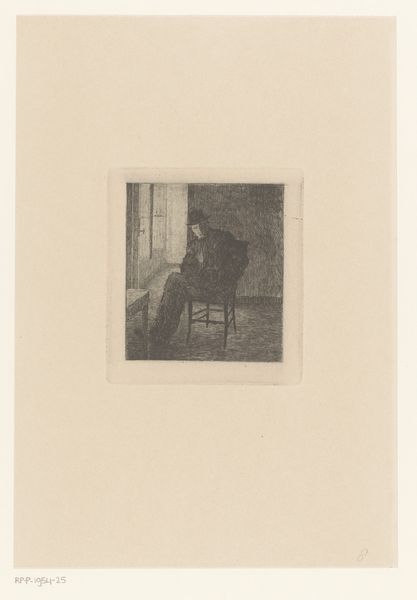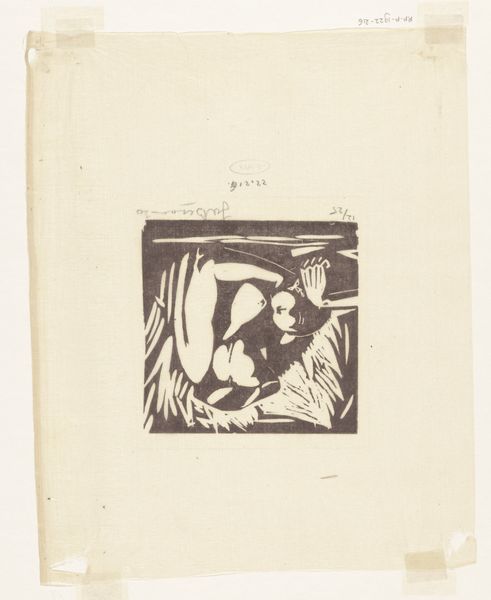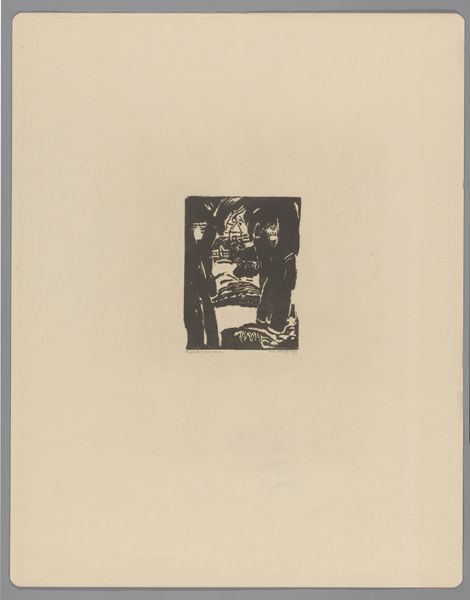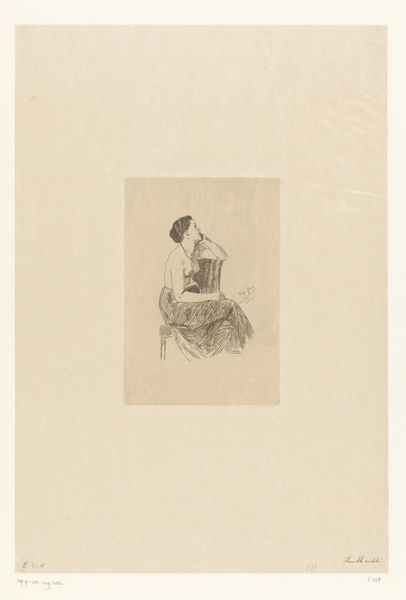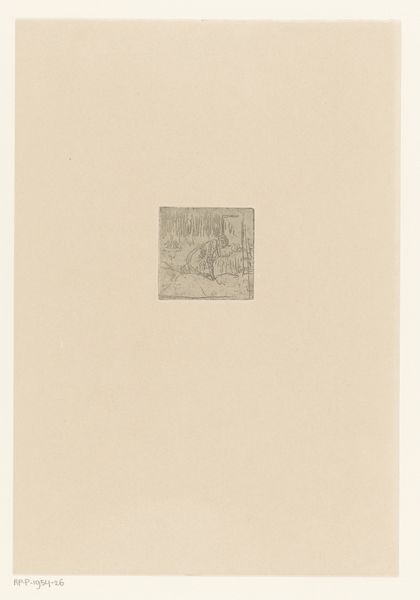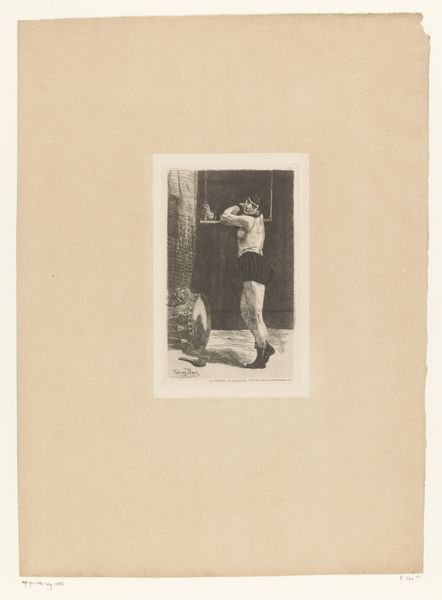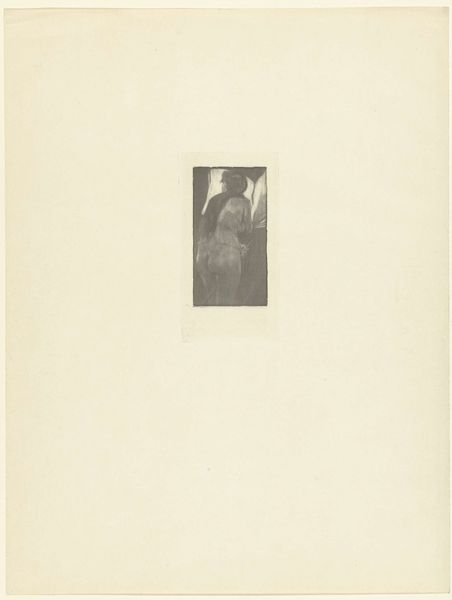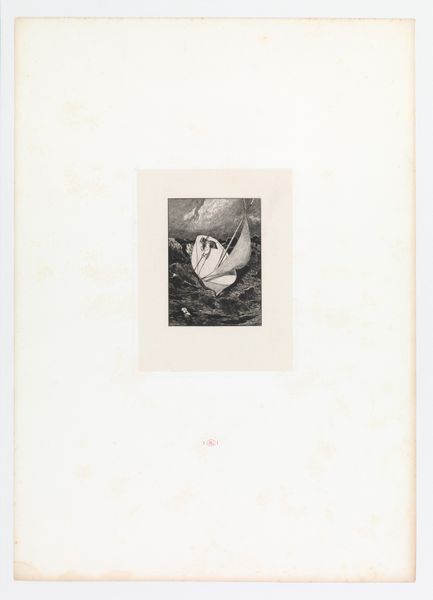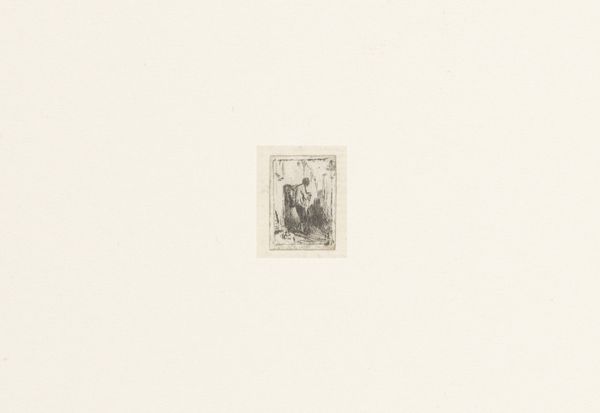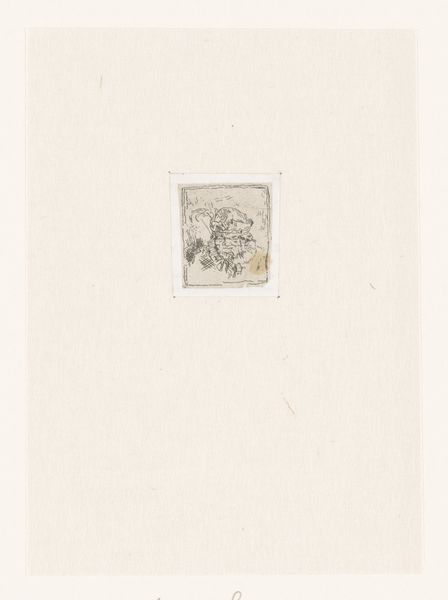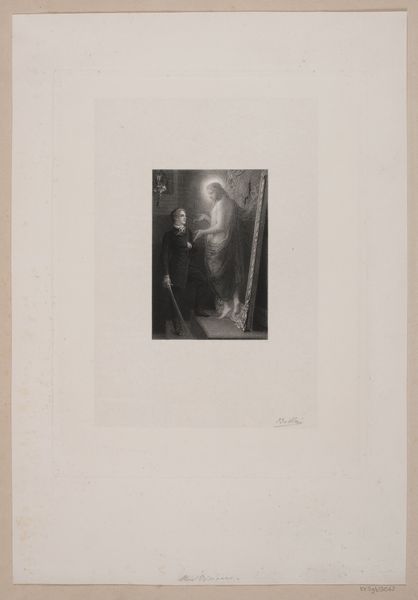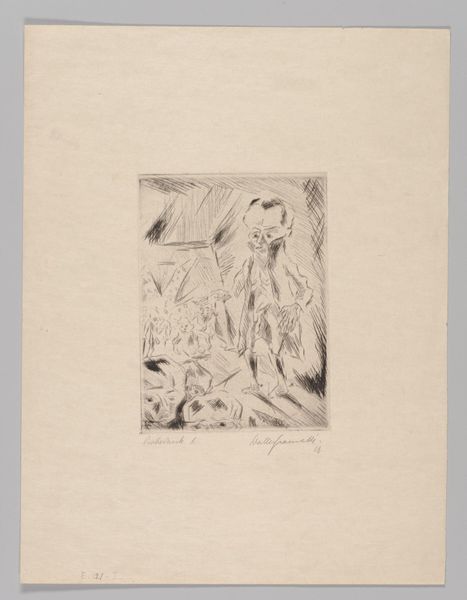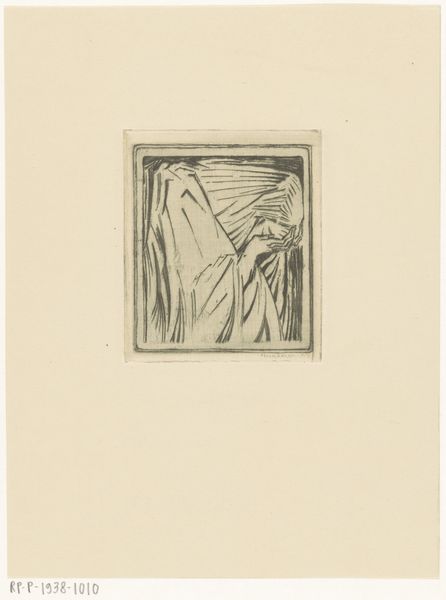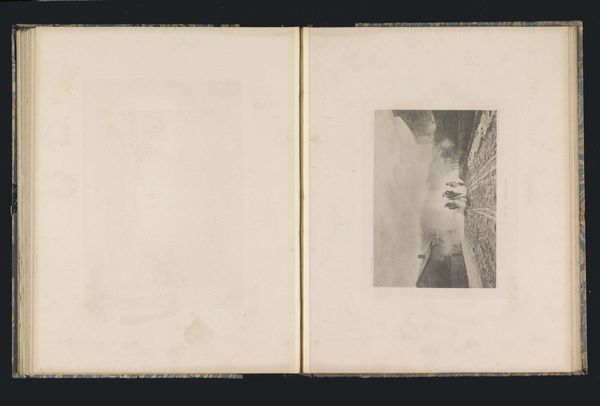
drawing, print, graphite
#
portrait
#
drawing
# print
#
figuration
#
graphite
#
monochrome
Dimensions: height 81 mm, width 53 mm, height 344 mm, width 266 mm
Copyright: Rijks Museum: Open Domain
Curator: Sobering, isn't it? Maurice Delcourt’s “Dood als skelet met kleding aan," tentatively dated to 1895, presents a stark figure executed in graphite, categorized as both drawing and print. Editor: It gives me the chills, in the best possible way! The image of death— skeletal remains donning clothes, seemingly remnants of life—is almost humorous, albeit in a deeply macabre sense. It’s a tiny island of mortality in this sea of blank paper. Curator: Indeed, the impact derives partly from the presentation. Delcourt’s choice to depict this within what resembles a miniature frame almost creates a satirical commentary on the traditional portrait, undermining conventions and notions of immortality through representation. Editor: Exactly. The tight framing adds to the sense of claustrophobia and finality. The stark contrast – black and white, life and death – amplifies the impact. The suit jacket seems to hang off the bones, as if gravity is making death look exhausted. It's pretty cheeky for something made that long ago. Curator: The cultural context is essential; 19th-century Europe witnessed an obsession with mortality and the grotesque, often intertwined with anxieties about societal change and the rise of scientific rationalism eroding traditional beliefs. This print encapsulates those sentiments perfectly. Editor: I wonder if Delcourt thought someone like us would be scrutinizing his bones one day... I think it's less about cultural shifts, and more about something deeper – mortality. Maybe it's a message – death will get you too, and probably put you in ill-fitting garments after. I almost see it as performance art. Curator: I see your point about the universal theme, yet framing it within historical materialism highlights its nuanced criticism of power structures and artistic practices within that period. Its graphic qualities would have had greater relevance for the political struggles and debates over class relations within European society. Editor: Point taken. Maybe it *was* meant to unsettle those portraits of fancy dukes... Whatever its real agenda, I find something wonderfully disarming and profoundly beautiful in how Delcourt manages to provoke, even today. It makes me wanna re-think all my portraiture. Curator: Absolutely. Delcourt prompts a reassessment of how art represents life and death—offering poignant and sardonic perspectives on humanity's temporal existence. Editor: It's a compelling reminder, in the briefest and bleakest way possible. Cheers to death! Or... not.
Comments
No comments
Be the first to comment and join the conversation on the ultimate creative platform.
